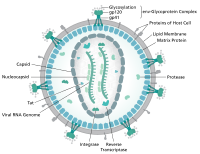
Clinical grade lentiviral vector purification and quality control requirements.
Sign Up to like & getrecommendations! Published in 2022 at "Journal of separation science"
DOI: 10.1002/jssc.202100937
Abstract: Lentiviral vectors have been proven to be a powerful tool in gene therapies that includes the ability to perform long-term gene editing in both dividing and non-dividing cells. In order to meet the rising demand… read more here.
Keywords: purification; quality; lentiviral vectors; clinical grade ... See more keywords

Reprogramming Human Fibroblasts to Induced Pluripotent Stem Cells Using the GFP-Marked Lentiviral Vectors in the Chemically Defined Medium.
Sign Up to like & getrecommendations! Published in 2021 at "Methods in molecular biology"
DOI: 10.1007/978-1-0716-1084-8_7
Abstract: Much investigation is needed to understand the underlying molecular mechanisms of iPSC reprogramming and to improve this technology. Lentivirus-mediated iPSC reprogramming remains the most effective method to study human pluripotency reprogramming. iPSC production is more… read more here.
Keywords: using gfp; defined medium; human fibroblasts; lentiviral vectors ... See more keywords

Production of lentiviral vectors in suspension cells using low proportion of supercoiled circular plasmid DNA
Sign Up to like & getrecommendations! Published in 2020 at "Cytotechnology"
DOI: 10.1007/s10616-020-00433-4
Abstract: The supercoiled circular (SC) topology form of plasmid DNA has been regarded to be advantageous over open circular or linearized analogue in transfection and expression efficiency, and therefore are largely demanded in the biopharmaceutical manufacturing.… read more here.
Keywords: lentiviral vectors; plasmid dna; plasmid; proportion plasmid ... See more keywords

Tumor targeting by lentiviral vectors combined with magnetic nanoparticles in mice.
Sign Up to like & getrecommendations! Published in 2017 at "Acta biomaterialia"
DOI: 10.1016/j.actbio.2017.07.007
Abstract: Nanomaterials conjugated or complexed with biological moieties such as antibodies, polymers or peptides appear to be suitable not only for drug delivery but also for specific cancer treatment. Here, biocompatible iron oxide magnetic nanoparticles (MNPs)… read more here.
Keywords: magnetic nanoparticles; lentiviral vectors; mnps complexes; expression ... See more keywords

Introducing a cleavable signal peptide enhances the packaging efficiency of lentiviral vectors pseudotyped with Japanese encephalitis virus envelope proteins.
Sign Up to like & getrecommendations! Published in 2017 at "Virus research"
DOI: 10.1016/j.virusres.2016.12.007
Abstract: Research into the properties of Japanese encephalitis virus (JEV) has been facilitated by use of pseudotyped viruses. The signal peptide is a key determinant for membrane targeting and membrane insertion, which could affect packaging of… read more here.
Keywords: pseudotyped jev; jev based; signal peptide; lentiviral vectors ... See more keywords

Baboon envelope pseudotyped lentiviral vectors: a highly efficient new tool to genetically manipulate T-cell acute lymphoblastic leukaemia-initiating cells
Sign Up to like & getrecommendations! Published in 2017 at "Leukemia"
DOI: 10.1038/leu.2016.372
Abstract: Baboon envelope pseudotyped lentiviral vectors: a highly efficient new tool to genetically manipulate T-cell acute lymphoblastic leukaemia-initiating cells read more here.
Keywords: vectors highly; lentiviral vectors; pseudotyped lentiviral; envelope pseudotyped ... See more keywords

Lentiviral vectors can be used for full-length dystrophin gene therapy
Sign Up to like & getrecommendations! Published in 2017 at "Scientific Reports"
DOI: 10.1038/s41598-017-00152-5
Abstract: Duchenne Muscular Dystrophy (DMD) is caused by a lack of dystrophin expression in patient muscle fibres. Current DMD gene therapy strategies rely on the expression of internally deleted forms of dystrophin, missing important functional domains.… read more here.
Keywords: length dystrophin; gene therapy; full length; lentiviral vectors ... See more keywords

Erratum: Lentiviral vectors can be used for full-length dystrophin gene therapy
Sign Up to like & getrecommendations! Published in 2017 at "Scientific Reports"
DOI: 10.1038/srep46880
Abstract: This corrects the article DOI: 10.1038/srep44775. read more here.
Keywords: vectors used; full length; erratum lentiviral; lentiviral vectors ... See more keywords

Phagocytosis-shielded lentiviral vectors improve liver gene therapy in nonhuman primates
Sign Up to like & getrecommendations! Published in 2019 at "Science Translational Medicine"
DOI: 10.1126/scitranslmed.aav7325
Abstract: Lentiviral vectors with high surface content of CD47 improved gene transfer efficiency to hepatocytes in nonhuman primates. Vectors in stealth mode Gene therapy using adeno-associated viral vectors (AAVs) has shown safety and efficacy in patients… read more here.
Keywords: phagocytosis; gene therapy; lentiviral vectors; nonhuman primates ... See more keywords

Engineering Novel Lentiviral Vectors for Labelling Tumour Cells and Oncogenic Proteins
Sign Up to like & getrecommendations! Published in 2022 at "Bioengineering"
DOI: 10.3390/bioengineering9030091
Abstract: Lentiviral vectors are unique and highly efficient genetic tools to incorporate genetic materials into the genome of a variety of cells whilst conserving biosafety. Their rapid acceptance made it necessary to improve existing protocols, including… read more here.
Keywords: vectors labelling; novel lentiviral; labelling tumour; lentiviral vectors ... See more keywords

Non-Integrating Lentiviral Vectors in Clinical Applications: A Glance Through
Sign Up to like & getrecommendations! Published in 2022 at "Biomedicines"
DOI: 10.3390/biomedicines10010107
Abstract: Lentiviral vectors (LVs) play an important role in gene therapy and have proven successful in clinical trials. LVs are capable of integrating specific genetic materials into the target cells and allow for long-term expression of… read more here.
Keywords: clinical studies; expression; lentiviral vectors; integrating lentiviral ... See more keywords